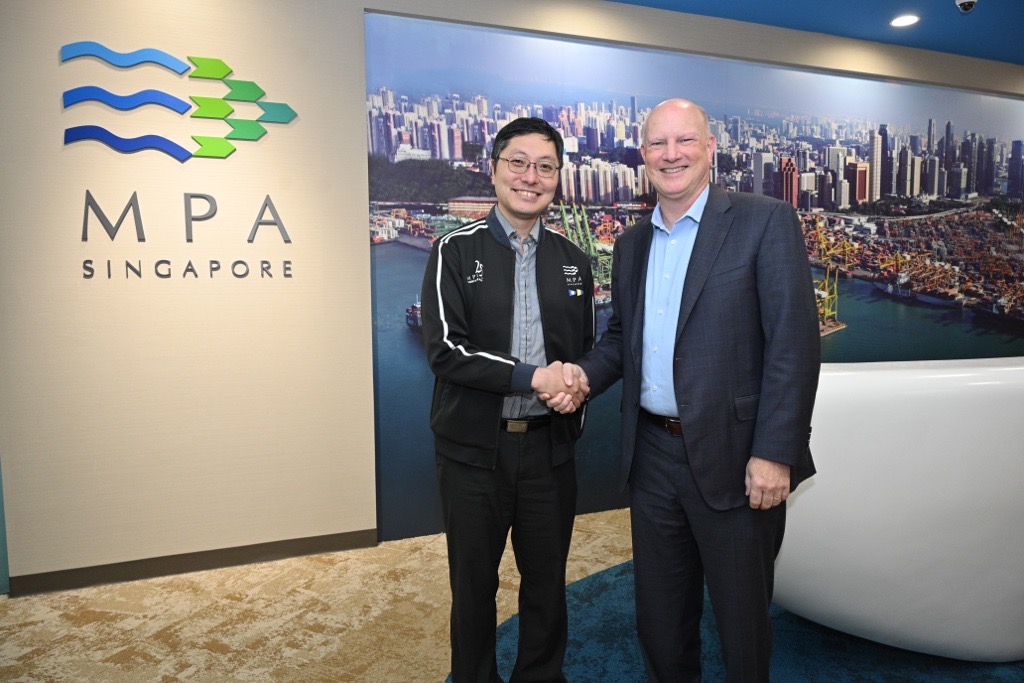AiP on compressed hydrogen vessel design clears way to make final design of rugged ferry as company looks to replace LNG fuelled engines on other vessels with diesel engines.
Torghatten Nord is one of the many ferry owners that run services around Norway’s rugged coastline. As with many of them it responds to the Norwegian Road Administration’s regular calls for tenders for renewed ferry services. So, when it came to the renewal of the service between the North Norwegian town of Bodø and the islands of Lofoten, it found it had to step up its game when it came to the design and finding a cleaner ferry.
The reason was, according to Torkild Torkildsen, CEO of Torghatten Nord, that the request for a tender was for zero emission vessels, The Norwegian authorities having decided that liquid natural gas is no longer fit for the country’s future, wanted cleaner fuel options.
The response has been a proposal for a pair of compressed-hydrogen fuel-cell powered ferries that can make the more than 100km exposed run from Bodø to the tip of Lofoten, and back again, as well as a proposal to convert the two ferries the company already has in service on the route, away from LNG and to bio-diesel.
This latter point is certainly noteworthy. While many companies continue to promote LNG-ready ship designs and LNG conversions, of usually larger ships, Norway’s ferries are now being converted in the other direction.
“Yes, it’s a little bit different, or the opposite of what major parts of the industry are doing,” agreed Torkildsen. “LNG is for all practical reasons out, in the Norwegian domestic ferry service. So, we are leaning on Norwegian Ship Design here, and removing the whole gas system and installing diesel engine and tanks and the necessary arrangements”.
These two existing vessels had been built specifically for the Bodo-Lofoton service, which means a route across extremely exposed Norwegian waters throughout the year. They have only been in service for about 10 years and should have another 20 years’ service life in them.
Torghatten Nord already has vessels running on bio-diesel says Torkildsen, so there is already a fuel supplier. The plan is to get the two new hydrogen powered vessels into service to replace the existing vessels by 2025, then convert the existing ones and have them in reserve for the busier summer season.
Hydrogen
AiP is an approval in principle, and means what it says, that the class society that is looking at a novel design has approved the work so far having undergone risk assessments. AiP’s tend to be issued when there are no known rules to determine the design requirements. In this case, because there are no agreed class requirements on using hydrogen as a fuel the class society which has been called on to look over the plans, Lloyd’s Register, has used all the knowledge and known requirements at its disposal to help ensure that the design will be safe. For the Torghatten Nord vessel designs this means looking at the fuel supply, the compressed gas systems, the fuel cell arrangements.
With the AiP being issued, Norwegian Ship Design, the Tromsö based naval architects that have been working on the design, will now have the confidence to work on the full detailed design of the ferry ahead of a more detailed class approval and plan approval from the authorities.
It also gives Torghatten Nord the confidence to work on securing a contract with a shipyard for construction of the vessel.
NSD CEO Gjermund Johannessen said the option was made to use compressed hydrogen instead of liquified hydrogen for safety and cost reasons, noting the costs of liquifying and regasifying the hydrogen, as well as the increased risks of a liquid hydrogen leak.
The compressed hydrogen, at least 85% of it, needs to be a green fuel (made from renewable electricity) right from the start of operation on October 1st 2025. Torghatten Nord has not finalised the fuel supply yet, but is working on getting this done over the coming three years; but with other vessel operators also working on green hydrogen fuel contracts in Norway, supply options are increasing.
The rise of the AiP
Readers of Fathom World will not have missed the increased number of announcements from class societies about AiPs being issued. With no agreed regulations on some of these new fuels and systems, risk based AiPs are being issued to help move the industry along its decarbonisation route.
This means there’s a lot of interest to go forward, says Peter Van de Graaf form Lloyd’s Register who has been working on the AiP and risk assessments for these two new ferries.
“I think what an AiP says is that there is collaboration between people, and we are looking at designs, which we believe have a lifetime ahead of them,” he said.
“What is also important is that by doing these approval in principles, and by having projects like this, our knowledge will increase and we will we will come to more viable solutions in the future by sitting around the table, collaborating, exchanging experience, and building these kinds of projects, which is actually, in my opinion, very hopeful”.
Norway was instrumental in launching the concept of LNG as a marine fuel, and is now clearly pushing hydrogen as the next alternative, a fuel which it also has the ability to produce locally given the growing abundance of green electricity in the country.


































